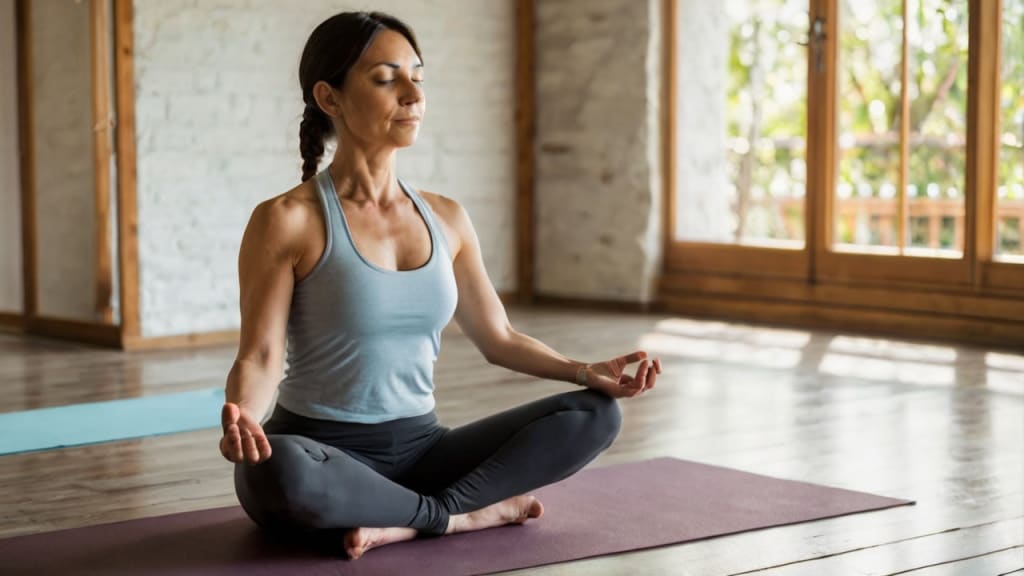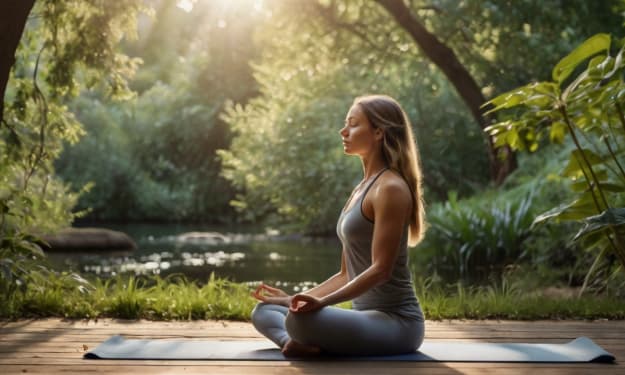Yoga and Mindfulness
A Path to Inner Peace and Well-Being

Have you ever felt like the chaos of daily life is pulling you in a hundred different directions at once? Imagine finding a moment of peace, a space where you can breathe deeply and feel truly present. Welcome to the transformative world of yoga and mindfulness! While some might think yoga is just about bending into impossible poses or that mindfulness is an abstract concept reserved for monks, the reality is far more accessible and beneficial. In this blog post, we’ll dive into how integrating yoga and mindfulness can help manage stress, boost your mental clarity, and enhance your overall well-being. We'll explore practical tips, scientific insights, and personal anecdotes that will show you how to bring a little more zen into your everyday life. So, roll out your yoga mat, take a deep breath, and get ready to embark on a journey to inner peace and balance.
Introduction
In today's fast-paced world, finding moments of peace and tranquility can feel like a daunting task. The constant barrage of information, responsibilities, and stress can take a toll on our mental and physical health. But what if there was a way to find inner calm amidst the chaos? Enter yoga and mindfulness—two practices that, when combined, can transform your life. This article delves into the benefits of yoga and mindfulness, how they work together, and practical ways to incorporate them into your daily routine.
The Benefits of Yoga and Mindfulness
Physical Health Benefits
Yoga, an ancient practice that combines physical postures, breathing exercises, and meditation, offers numerous physical health benefits. Regular practice can improve flexibility, strength, and balance. It also helps in reducing chronic pain, improving cardiovascular health, and boosting the immune system. For example, poses like downward dog and warrior strengthen muscles, while deep breathing exercises increase lung capacity and improve oxygen flow throughout the body. Studies have shown that yoga can also lower blood pressure and reduce the risk of heart disease.
Mental Health Benefits
Beyond the physical, yoga and mindfulness have profound effects on mental health. Mindfulness, the practice of being present in the moment, can reduce stress, anxiety, and depression. By focusing on the breath and body, practitioners learn to let go of negative thoughts and emotions. Yoga, with its emphasis on meditation and relaxation, complements mindfulness by promoting mental clarity and emotional stability. Together, these practices can improve overall well-being, enhance self-awareness, and foster a more positive outlook on life.
Emotional and Spiritual Benefits
The emotional and spiritual benefits of yoga and mindfulness are equally significant. These practices encourage self-reflection and self-compassion, leading to a deeper understanding of oneself and one's place in the world. They can help individuals cope with grief, loss, and trauma by providing a safe space to process emotions. Spiritually, yoga and mindfulness can create a sense of connection to something greater, whether it be a higher power, nature, or the universe. This sense of connection can bring about feelings of peace, purpose, and fulfillment.
How Yoga and Mindfulness Work Together
The Synergy of Movement and Stillness
Yoga and mindfulness are like two sides of the same coin. Yoga involves physical movement, which can help release tension and prepare the body for stillness. Mindfulness, on the other hand, involves mental stillness, which can deepen the experience of yoga. When practiced together, they create a powerful synergy that enhances the benefits of each. For example, practicing mindfulness during yoga can increase body awareness and help you stay present in each pose, leading to a more mindful and effective practice.
Practical Applications in Daily Life
Incorporating yoga and mindfulness into your daily routine can be easier than you think. Start your day with a few minutes of mindful breathing or a short yoga sequence to set a positive tone. Throughout the day, take mindful breaks to check in with your body and breath. In the evening, unwind with a gentle yoga practice or a mindfulness meditation to release the stresses of the day. These simple practices can make a big difference in how you feel and function.
Examples of Combined Practices
There are many ways to combine yoga and mindfulness. For example, you can practice mindful yoga, where you focus on your breath and body sensations as you move through each pose. You can also incorporate mindfulness into your daily activities, such as eating, walking, or washing dishes. By bringing a mindful awareness to these activities, you can turn them into opportunities for practice. Another example is yoga nidra, a form of guided meditation that is often practiced at the end of a yoga session. This practice involves lying down in a comfortable position and following the guidance of a teacher to enter a state of deep relaxation and awareness.
Getting Started with Yoga and Mindfulness
Finding the Right Practice for You
There are many different styles of yoga and mindfulness practices to choose from, so it's important to find one that resonates with you. For example, if you prefer a more active and vigorous practice, you might enjoy vinyasa or power yoga. If you prefer a more gentle and restorative practice, you might enjoy yin or hatha yoga. For mindfulness, you can choose from a variety of practices, such as mindful breathing, mindful walking, or body scan meditation. It's also helpful to try different teachers and classes to find one that you connect with.
Setting Up a Home Practice
You don't need a lot of space or equipment to practice yoga and mindfulness at home. A quiet space, a yoga mat, and a few props like blocks and a strap can help. You can find many free resources online, such as videos and guided meditations, to help you get started. Creating a regular practice schedule can also help you stay consistent. For example, you might set aside time each morning or evening for your practice.
Tips for Staying Consistent
Consistency is key to reaping the benefits of yoga and mindfulness. Here are a few tips to help you stay on track:
- Start small and gradually increase the length and intensity of your practice.
- Set realistic goals and celebrate your progress.
- Find a practice buddy or join a class to stay motivated.
- Keep a journal to track your practice and reflect on your experiences.
- Be patient and compassionate with yourself, and remember that it's okay to have days when you don't feel like practicing.
Overcoming Common Challenges
Dealing with Distractions
One of the biggest challenges to practicing yoga and mindfulness is dealing with distractions. Whether it's external distractions like noise or internal distractions like racing thoughts, it's important to find ways to minimize them. Creating a dedicated practice space, setting boundaries with family and friends, and using noise-canceling headphones or earplugs can help. Practicing mindfulness can also help you become more aware of distractions and learn to let them go.
Managing Time and Commitments
Another common challenge is finding the time to practice amidst a busy schedule. It's important to prioritize your practice and make it a non-negotiable part of your day. This might mean waking up a little earlier, cutting back on non-essential activities, or incorporating your practice into other activities, such as walking or commuting. It's also helpful to remember that even a few minutes of practice can make a difference.
Addressing Physical and Mental Barriers
Physical and mental barriers, such as injuries, chronic pain, or mental health issues, can also make it challenging to practice yoga and mindfulness. It's important to listen to your body and modify your practice as needed. This might mean using props, practicing gentle or restorative yoga, or seeking guidance from a teacher or therapist. It's also important to be patient and compassionate with yourself and to seek support when needed.
Conclusion
Yoga and mindfulness are powerful practices that can transform your life. By integrating them into your daily routine, you can improve your physical and mental health, enhance your well-being, and find a sense of peace and balance amidst the chaos of daily life. Whether you're new to these practices or have been practicing for years, there's always more to learn and explore. So, roll out your mat, take a deep breath, and embark on this journey to inner peace and well-being.
About the Creator
T Household
Passionate working mom balancing career and family life, striving to enhance her family's well-being with dedication, love, and perseverance.
Enjoyed the story? Support the Creator.
Subscribe for free to receive all their stories in your feed. You could also pledge your support or give them a one-off tip, letting them know you appreciate their work.






Comments
There are no comments for this story
Be the first to respond and start the conversation.